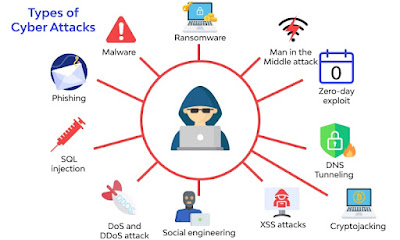Business Continuity Planning : Be Prepared for the Unexpected!.
What happens when a major data breach occurs? or a data center network switch failed? How will you act when a ransomware attacked your ERP server? What will you do if your system administrator suffered a heart attack? They are everyday potential disasters. Have you ever planned to face such disasters?
Practically, all risks associated with a business function cannot be totally eliminated. Despite every efforts, the residual risks can always remain, and incidents might still occur.
Unavoidable situations or unexpected threats and vulnerabilities may bypass your security controls to effect confidentiality, integrity or availability of your information assets.
BCP is contingency planning aims to prepare for major incidents and disasters by making plans, assigning responsibilities and allocating resources resources to minimize the adverse consequences and recover fast to the normal state.
BCP aimed to keep important business processes running. It directs making supporting information systems operational and available to business functions. The measures may involve recovery from backups, redundancy with automated fail over, ensure off-site operations, having alternative suppliers, fallback equipment and networks etc. BCP require IT infrastructure and processes in operation despite disasters to recover and resumption of critical business functions.This may include planning for office relocation, manual processing, online working, third party arrangements etc. The process of Disaster Recovery may involve manual restoring of data, use of standby equipment, alternative communications facilities etc.
Incident Respinse, Disaster Recovery, and Crisis Management
are key processes in BCP. Incident Response (IR) evaluates events and responds to information security incidents. It's a continues process dealing with minor incidents to update systems and controls to improve resilience.
Disaster Recovery is a plan to recover affected functions. Disaster Recovery Plan (DRP) is activated anytime as a result of an incident.
ISO 27001 Annex A.17.1 provides controls for information security continuity. It’s an important part of your ISMS) for ISO 27001 certification.
Establishing of Information Security Continuity, require documenting and maintaining relevant processes, procedures, physical, administrative and physical controls to mitigate a disruptive situation. The documentation should include BC activities and owners, their responsibilities, timescales, mitigating measures, communications strategy, resources including a management structure with authority to manage the BC to make business return to normality.
Each individual organization must determine how often to test its BCP, but it should be tested at predefined intervals as well as when significant changes happen within the business environment. Regular internal audits must verify the information security continuity controls in order to test and ensure that they are effective during incidents. During ISO 27001 accreditation process an auditor will seek evidence of plans and results of periodic testing of BC controls.
Components of a BCP
- Members from all business units involved
- The technology must align with the business needs
- Contact numbers of all BCP team members
- Contact numbers of all backup members
- Immediate response procedures and checklists
- Notification systems and call trees
- Guidelines for management
- Designation of authority to enact the plan
- Contacts of supply chain
- Redbook - a printed manual stored outside
Business Continuity Checklist
- Alert Top Management for Approval
- Activate the business continuity plan.
- Communication is priority
- Communicate with critical contacts
- Communicate with supply chain
- Execute BC procedures
- Ensure accounting of all systems and processes




Comments
Post a Comment